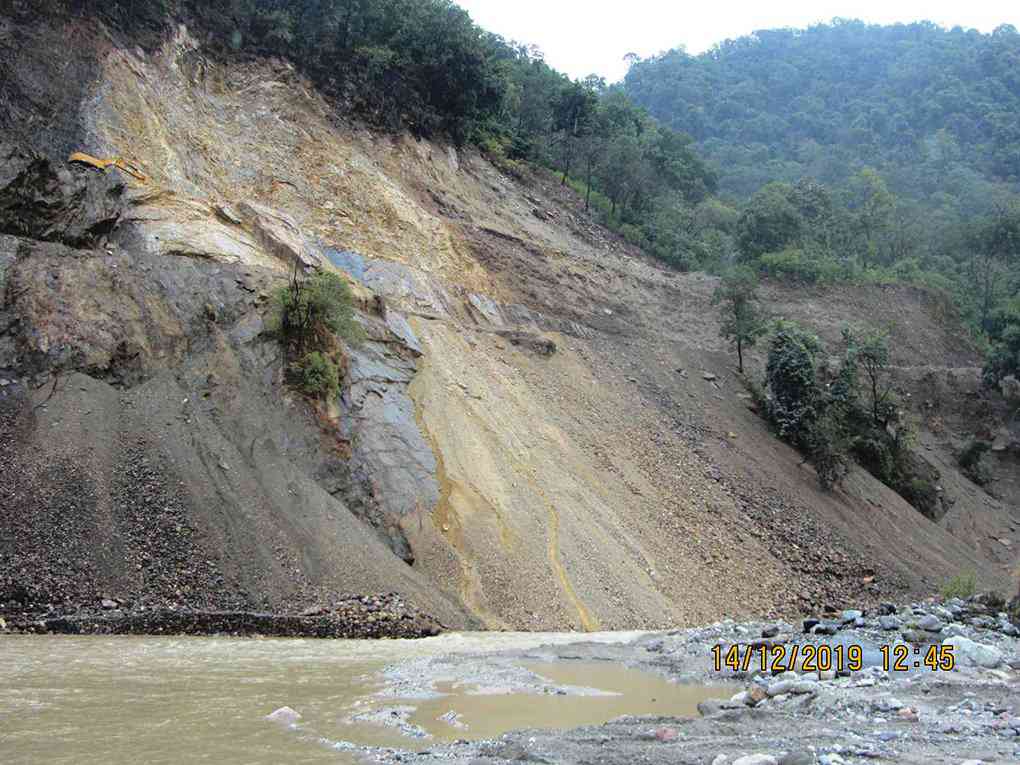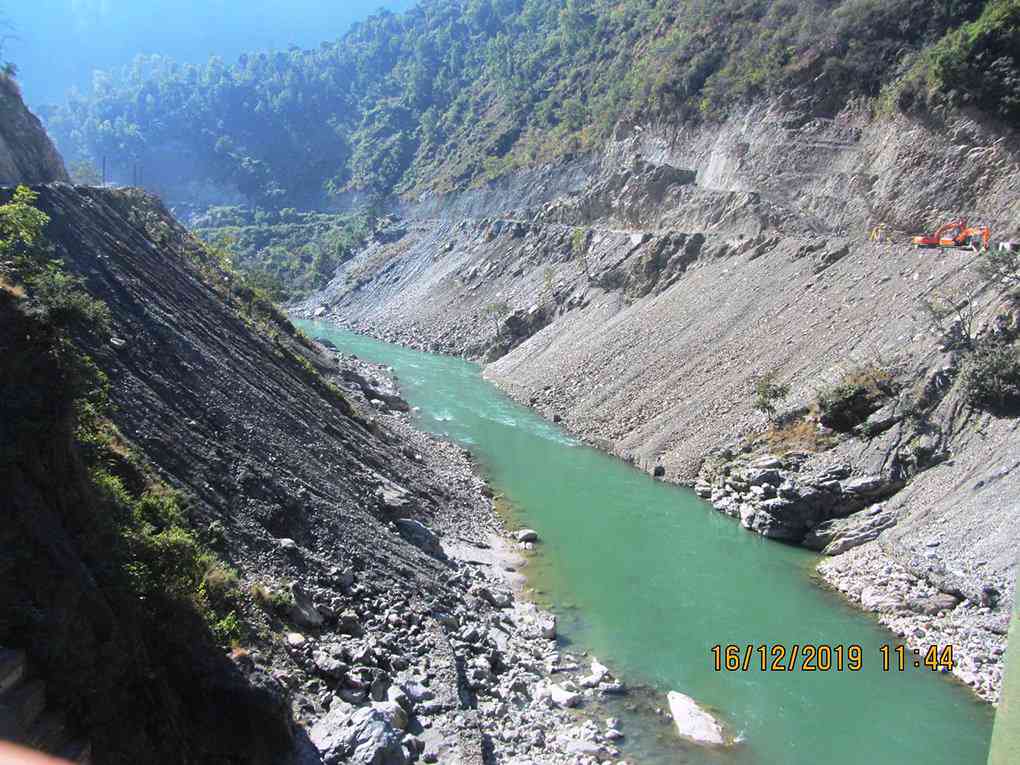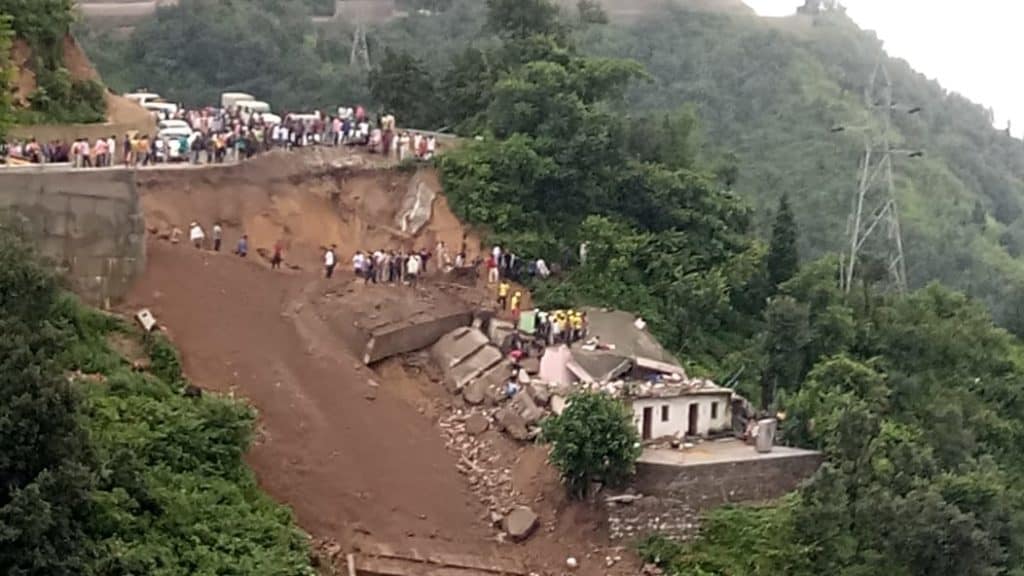18 November 2021
Landslides and the road network in Uttarakhand, India
Posted by Dave Petley
Landslides and the road network in Uttarakhand, India
The Indian Express is carrying a story today about landslides and the so-called Char Dham road project. The Char Dham project involves widening and upgrading of 900 km of road between four population centres, Yamunotri, Gangotri, Kedarnath, and Badrinath, in Uttarakhand. I have blogged previously on this issue. The trigger for the Indian Express article is a set of comments made by the Union Road Transport and Highways Secretary, Giridhar Aramane, yesterday. These are the key quotes from the interview:
“So the allegation that highway construction is causing landslides is both spurious as well counter productive to the national causes”
And
“The area is generally prone to landslides, even where there is no road… geology of the area is so fragile that there is no need for any external provocations. Internal forces, plate movements itself causes enough landslides in that areas”
There are, of course, parts of this that are correct. The geology of the area is indeed fragile – this is an area of steep mountains in a fractured geology that is prone to seismicity and monsoon rainfall. Landslides are inevitable even without the action of humans.
But to assert that highway construction is not causing landslides is demonstrably false. There are numerous images online of landslides on the Char Dham highways, such as these:-

A landslide on the Char Dham highway network. Image via Scroll.in
.

A landslide on the Char Dham highway network. Image via Scroll.in.
.

A landslide on the Char Dham highway network at Devprayag. Picture by Ayush Joshi via Citizenmatters.in.
.
I could not argue that India is incorrect to upgrade its roads – indeed there are undoubtedly strategic and development imperatives to do so. But in the fragile conditions of this area many landslides are inevitable during road construction unless high quality road engineering is adopted. To deny that the highway construction is causing landslides flies in the face of the evidence.
Landslides cause environmental damage, they drive economic loss, they kill people, they make the road network unreliable and, if there were to be a major earthquake, they make the provision of rescue and recovery extremely difficult, as was so evident in Pakistan in 2005 and in China in 2008. It is a folly to build roads in this way and it is a folly to deny the evidence of the impacts of these techniques on the landscape.


 Dave Petley is the Vice-Chancellor of the University of Hull in the United Kingdom. His blog provides commentary and analysis of landslide events occurring worldwide, including the landslides themselves, latest research, and conferences and meetings.
Dave Petley is the Vice-Chancellor of the University of Hull in the United Kingdom. His blog provides commentary and analysis of landslide events occurring worldwide, including the landslides themselves, latest research, and conferences and meetings.
In a recent publication by Nath et al. (2021) it is shown that road network is a prominent landslide causative factor, and it has a statistical contribution of 18% to the overall landslide susceptibility in the Garhwal Himalayas. The study was carried out for a 74km stretch of NH 7 from Rishikesh to Devprayag. The detailed article is available on:
https://doi.org/10.1007/s40098-021-00522-x
In a recent publication by Nath et al. (2021) it is shown that road network is a prominent landslide causative factor, and it has a statistical contribution of 20% to the overall landslide susceptibility in the Garhwal Himalayas. The study was carried out for a 74km stretch of NH 7 from Rishikesh to Devprayag. The detailed article is available on:
https://doi.org/10.1007/s40098-021-00522-x
In a recent study by Nath et al. (2021), the road networks are established as a significant landslide causative factor for the Garhwal Himalayas, with a statistical contribution of 20% towards the overall landslide susceptibility. The study was carried out for a 74 km stretch of the National Highway 7, starting from Rishikesh to Devprayag (one of the major routes of Char Dham yatra). The detailed article is available as:
https://doi.org/10.1007/s40098-021-00522-x
Yes agreed that Himalayan inherent character is fragile but if one compares the genesis of the landslides along those roads which is being widened and those roads which are not being widened in Uttarakhand the answer is human intervention has generated hundreds of landslide along Chardahm roads while the unwidened road having less than 5% landslides created in the monsoon period. Moreover, the Indian Government keeps the provisions of New Road construction and repairing of the roads but there is no budget for slope stabilisation
Road stability in hill terrain rather in any terrain takes time to attain sable slopes. Worked in this area between Pipalkoti and Badrinath and during my field work did not find new landslides rather only few areas of perpetual slides due to construction of roads as they were aligned on unstable material. But with time these areas attained stability like Hanuman Chatti etc. So the indiscriminate road widening without paying attention to geology, lithology, slope etc are invitation to landslides. Secondly the existing road width can definitely help in forces movement by keeping certain places with greater width in suitable locations. During armed conflicts the road can be opened only for restricted movement.
People need development. They choose an elected government who is forced to do work on the infrastructure development.
Sir, Development at what cost and for whom? Local population suffers and the fruits of development are enjoyed by outsiders. None questions the development but it can be done after taking all the factors in to consideration.
To what extent is excavated material being tipped downslope as a disposal method?